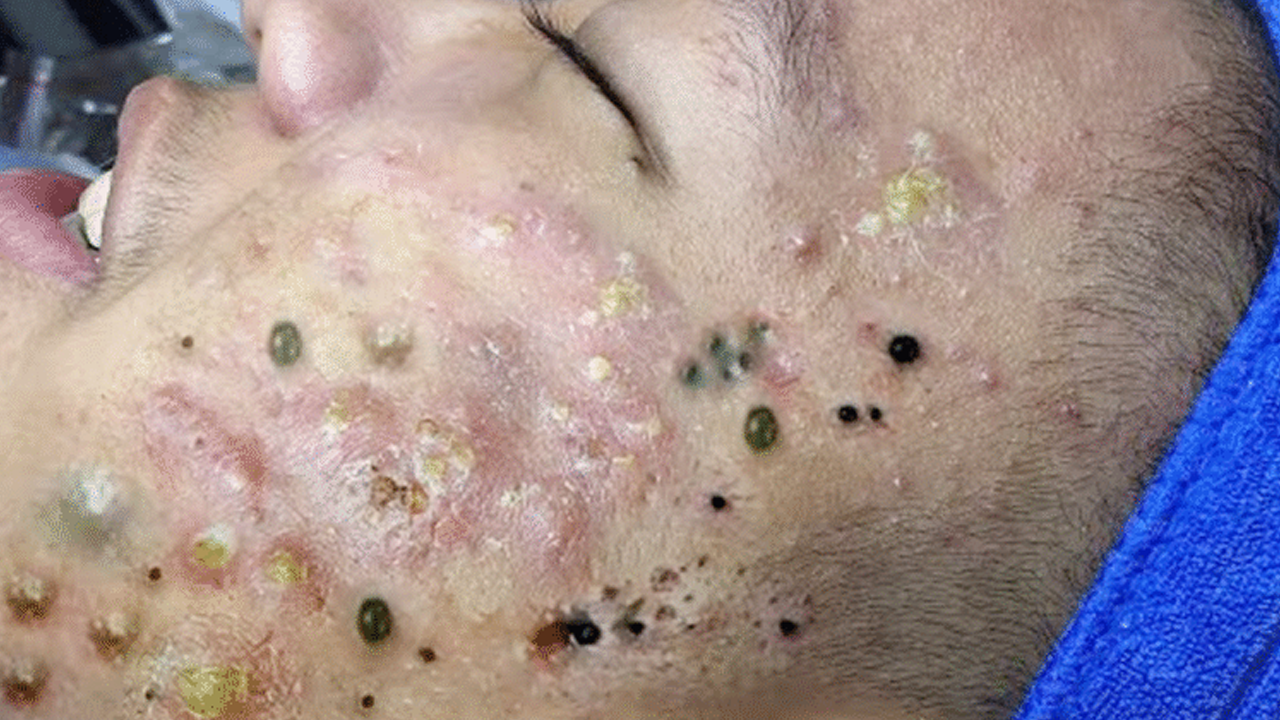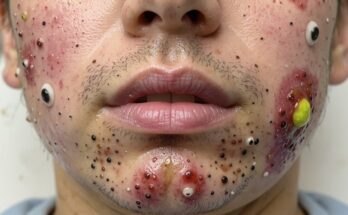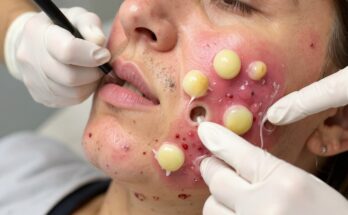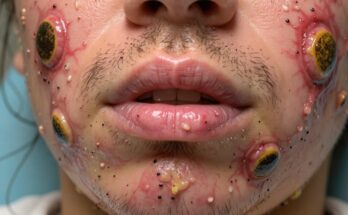Understanding and Treating Acne: A Comprehensive Guide
Acne, those pesky blemishes we often call zits, pimples, or spots, is a common skin condition affecting millions. It arises when the pores become clogged, leading to inflammation and unsightly bumps. While often associated with adolescence, acne can persist into adulthood, impacting self-esteem and requiring targeted treatment. This guide delves into the causes, types, symptoms, and effective management strategies for acne.
What Exactly is Acne?
Medically termed acne vulgaris, this skin condition primarily affects the hair follicles. Excess oil (sebum), dead skin cells, and bacteria combine to clog pores, triggering the development of various acne lesions. The severity varies greatly, from minor blackheads and whiteheads to more serious inflammatory lesions like pustules, nodules, and cysts.
Understanding Acne Lesions: A Closer Look
Several different types of acne lesions exist, each with unique characteristics:
- Whiteheads (closed comedones): Small, white bumps formed when a clogged pore remains closed.
- Blackheads (open comedones): Small, dark spots resulting from a clogged pore that is open to the surface, with the dark color due to oxidation.
- Papules: Small, tender, red bumps, often inflamed.
- Pustules: Similar to papules, but containing pus, appearing yellowish or whitish.
- Nodules: Large, painful, firm lumps deep beneath the skin’s surface.
- Cysts: Large, deep, painful, pus-filled lesions, representing the most severe form of acne. These are distinct from sebaceous cysts, which are independent, often larger, and grow slowly.
The Diverse Landscape of Acne Types
Acne isn’t a one-size-fits-all condition; various types exist, and individuals can experience multiple simultaneously.
Acne’s Varied Forms:
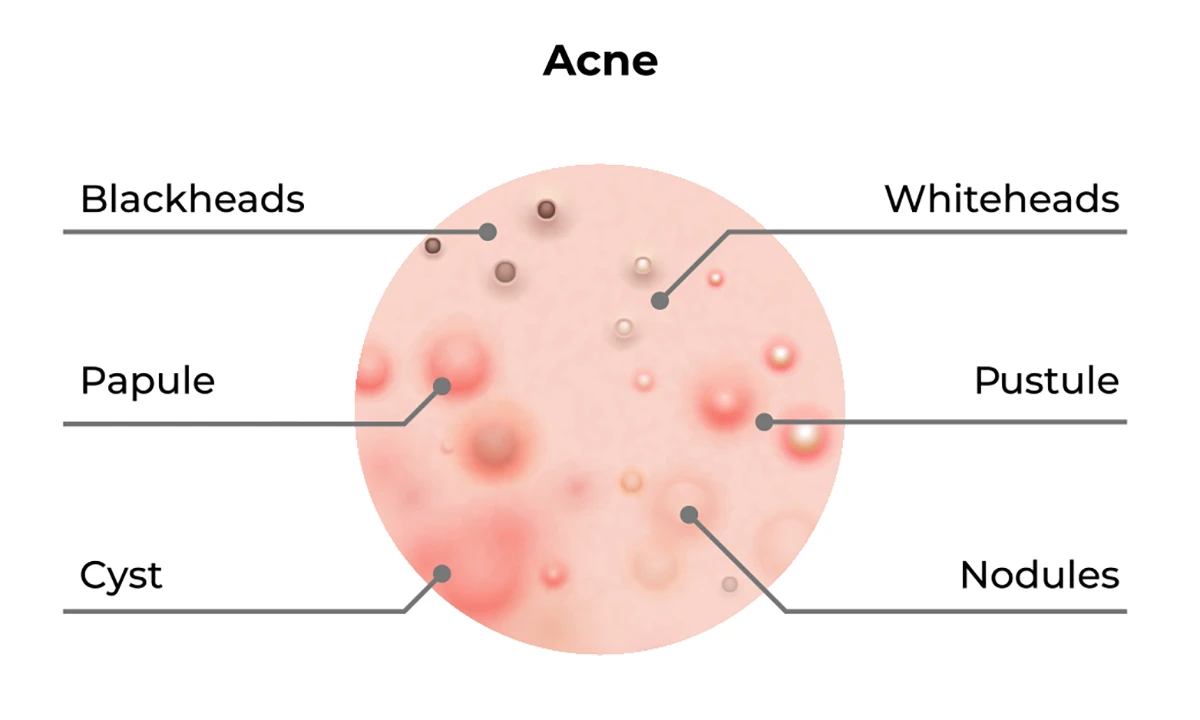
- Hormonal Acne: Often triggered by fluctuations in hormone levels, particularly during puberty, menstruation, pregnancy, menopause, or hormonal imbalances. This leads to increased oil production, clogging pores, and breakouts.
- Nodular Acne: Characterized by large, inflamed, and often painful nodules beneath the skin’s surface, appearing dark red or purple.
- Cystic Acne: The most severe form, featuring large, deep, painful, pus-filled cysts.
- Fungal Acne (Malassezia folliculitis): Caused by an overgrowth of yeast in the hair follicles, resulting in itchy, red, or pus-filled bumps. Crucially, it differs from common acne in its itchiness and requires distinct treatment.
- Baby Acne: A temporary condition in newborns, causing small, inflamed bumps on the face, neck, back, or chest, usually resolving spontaneously.
Pinpointing the Root Causes of Acne
Acne primarily stems from clogged pores. A combination of excess oil, dead skin cells, and bacteria trapped within the pores creates the inflammatory response seen in acne. While genetics play a significant role, external factors can exacerbate the condition.
Contributing Factors:
- Clogged Pores: The primary culprit, resulting from a build-up of oil and dead skin cells.
- Bacteria: Cutibacterium acnes (formerly known as Propionibacterium acnes) thrives in clogged pores, contributing to inflammation.
- Hormonal Changes: Fluctuations in hormones, especially androgens, significantly influence sebum production.
- Diet: Some studies suggest a link between high-sugar diets and worsened acne.
- Stress: Stress levels can impact hormone regulation, potentially contributing to breakouts.
Identifying Your Acne Risk
Certain factors increase your susceptibility to acne:
Risk Factors:
- Family History: A strong genetic predisposition exists.
- Certain Medications: Some medications, including corticosteroids, testosterone, and lithium, can trigger or worsen acne.
- Cosmetics and Skin Products: Oily or comedogenic products can clog pores.
Preventing and Managing Acne Scars
Acne scars can be a long-lasting consequence of severe acne. Several factors influence scar formation:
Scarring Risk Factors:
- Severity of Acne: Deep, inflammatory acne (nodules and cysts) significantly increases scar risk.
- Genetics: A family history of acne scarring elevates your risk.
- Delayed Treatment: Early intervention is crucial for minimizing scarring.
- Picking and Squeezing: Manipulating pimples worsens inflammation and increases scarring.
Effective Strategies for Clearer Skin
Treatment options range from simple skincare routines to prescription medications. Seeing a dermatologist is crucial for severe or persistent acne.
Treatment Approaches:
- Skincare Routine: Gentle cleansing twice daily to remove excess oil and debris is foundational.
- Topical Treatments: Benzoyl peroxide, retinoids, azelaic acid, salicylic acid, and others are applied directly to the skin.
- Oral Medications: Antibiotics (doxycycline, minocycline), spironolactone (for women with hormonal acne), and isotretinoin (for severe, resistant acne) are used in moderate to severe cases.
Preventing Future Breakouts:
While complete prevention is not always possible, adopting healthy habits can minimize breakouts:
- Consistent Skincare: Follow your dermatologist’s recommended routine diligently.
- Oil-Free Products: Use non-comedogenic makeup and skincare.
- Regular Hair Washing: Keep hair clean and away from the face.
- Makeup Removal: Always remove makeup thoroughly before bed.
- Hand Hygiene: Avoid touching your face unnecessarily.
Remember, consistent treatment and patience are key. If you’re struggling with acne, consult a dermatologist for a personalized treatment plan. Clear skin is achievable with the right approach!
